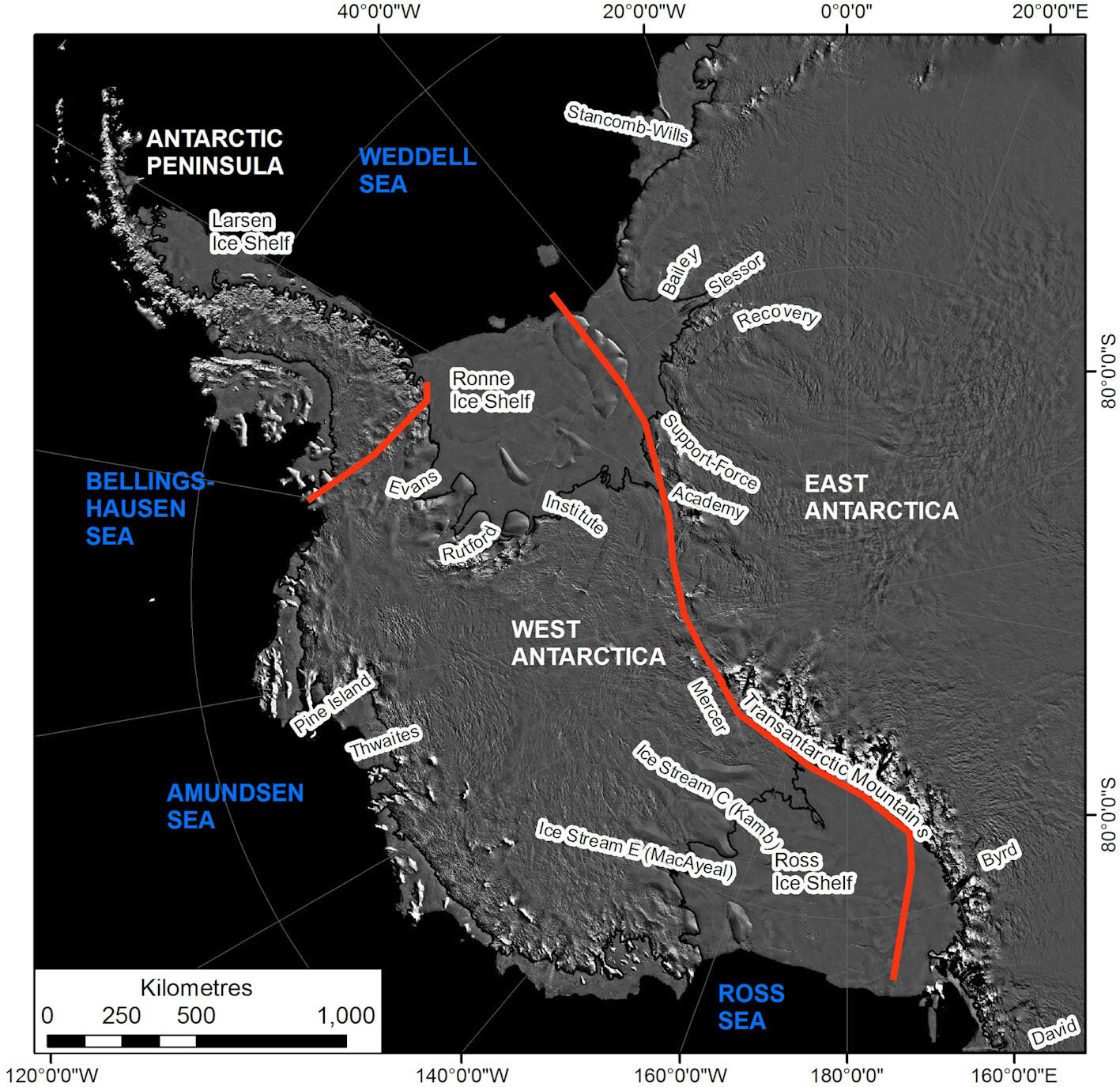Biodiversity & Environment
West Antarctic Ice Sheet
- 19 Jul 2019
- 4 min read
A recent study has revealed that the giant West Antarctic Ice Sheet (WAIS) is destabilising and is on the verge of a complete collapse.
- The researchers have concluded that this can be tackled by launching a last-ditch engineering project to blanket its surface with “artificial snow”.
Artificial Snow
- Scientists have proposed using 12,000 wind turbines to pump seawater 4,900 feet up to the surface, where it would be frozen into “snow” to weigh the WAIS down enough to stop it collapsing any further.
- West Antarctic Ice Sheet could be stabilized by depositing a minimum of 7,400 gigatonnes of artificial snow over 10 years around the Pine Island and Thwaites glaciers.
- The snow would be compacted as ice, pushing down the glacier and stabilising it, as well as making it thicker.
Findings
- Recent studies have shown warmer ocean water is being pushed toward the huge WAIS, destabilizing it and speeding up the decline of its huge glaciers.
- This is because much of the West Antarctic Ice Sheet lies below sea level, making it a Marine Ice Sheet. Marine Ice Sheets are more vulnerable to collapse because of their exposure to warm waters.
- West Antarctica is currently the world’s largest marine ice sheet.
- Moreover, many of these glaciers have a reverse bed slope, meaning that as they retreat it exposes deeper and thicker ice to the ocean.
- That is a very unstable position, and causes a positive feedback effect which accelerates the retreat (and hence contribution to sea level rise).
Impact of Climate Change
- However, it is more important to focus on the seriousness of the issue at the South Pole because of climate change.
- The Antarctica as a whole lost more than 3 trillion tons of ice between 1992 and 2017. Most of that came from West Antarctica, where the rate of ice loss has tripled in the last quarter century.
- Scientists believe that global warming has already caused so much melting at the south pole that the WAIS is now on course to disintegrate.
- This would trigger an eventual global sea level rise of at least three metres (10 feet) over the centuries.
- Although, full sea level rise projected to follow the collapse of the West Antarctic Ice Sheet might not unfold for hundreds of years, but this will eventually submerge low lying cities like Hamburg, Shanghai, New York and Hong Kong.
- Melting ice sheets in Greenland, the Arctic and shrinking glaciers around the world would worsen the problem and could ultimately lead to sea level rise by at least five metres (16 feet) even if countries manage to implement the Paris pact.
Way Forward
- While geoengineering projects do offer some hope in theory, they could also end up damaging the planet and its ecosystem in unexpected ways.These interventions must not be used as an excuse to delay emissions cuts.





